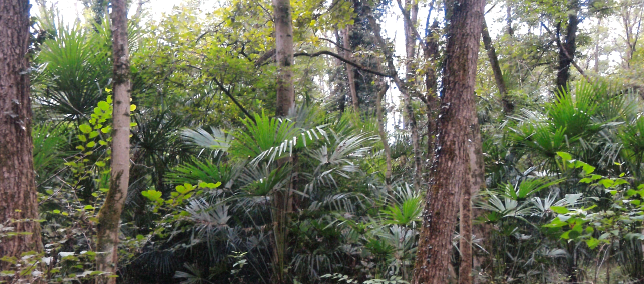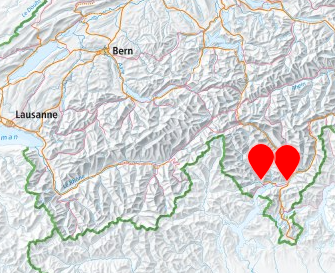Windmill palm expansion control
Controlling windmill palm expansion through the improvement of ecological knowledge

Context
Trachycarpus fortunei, the windmill palm, is native to central China, southern Japan, India and Myanmar and was imported to Europe in 1830. It resists temperatures down to -20°C and can be found above 2000 meters of altitude.
In the canton of Ticino, Switzerland, the spontaneous and fast propagation of the windmill palm in gardens and forests has been recently observed. The problem stems from the windmill palm domination on local plants and current vegetation and the fact that people don’t cut their own palm tree inflorescences which always bring more seeds to forests through vectors of dissemination such as birds. Moreover, it has become a critical preoccupation since climate change tends to extend its distribution area, colonising higher altitudes.
The initiative
The project consists of five steps:
– Map the distribution of windmill palm, analyse relevant climatic and geomorphologic factors, and extrapolate a potential distribution map to assess risks of invasion.
– Study decomposition processes through a litterbag experiment, study renewal dynamics as well as biodiversity in order to assess the ecological impact of the presence of this specie, especially in alluvial forests.
– Analyse the root system of windmillpalm and assess the risk of natural hazards by knowing its root contribution in soil reinforcement.
– Characterise biomass using earth laser scans to determineits contribution towildfire intensity and to analyse the effectiveness of different eradication techniques.
– Develop guidelines and priorities for action based on experimental results.
Results, limits and enable factors
For selected regions, drone flights were conducted and a remote sensing model was developed to recognize palm trees in the undergrowth in winter. On these bases, distribution models have been created for the whole canton of Ticino and projections for the future are being made.
Different eradication techniques were tested based on the height of palm trees whose determines if they can grow up or not.
One first publication published inthe Wald und Holz Journal [1] explores the ways tested to eliminate palm trees by cutting them. Other publications are planned in order to extend knowledge on this invasive species.
Updated on 29 May 2021
[1] Andrina Rimle, Gianni Boris Pezzatti, 2019, Bekämpfung der Chinesischen Hanfpalme | review Wald und Holz











